Cook the Books – Summers Under the Tamarind Tree
Photography by David Parker.
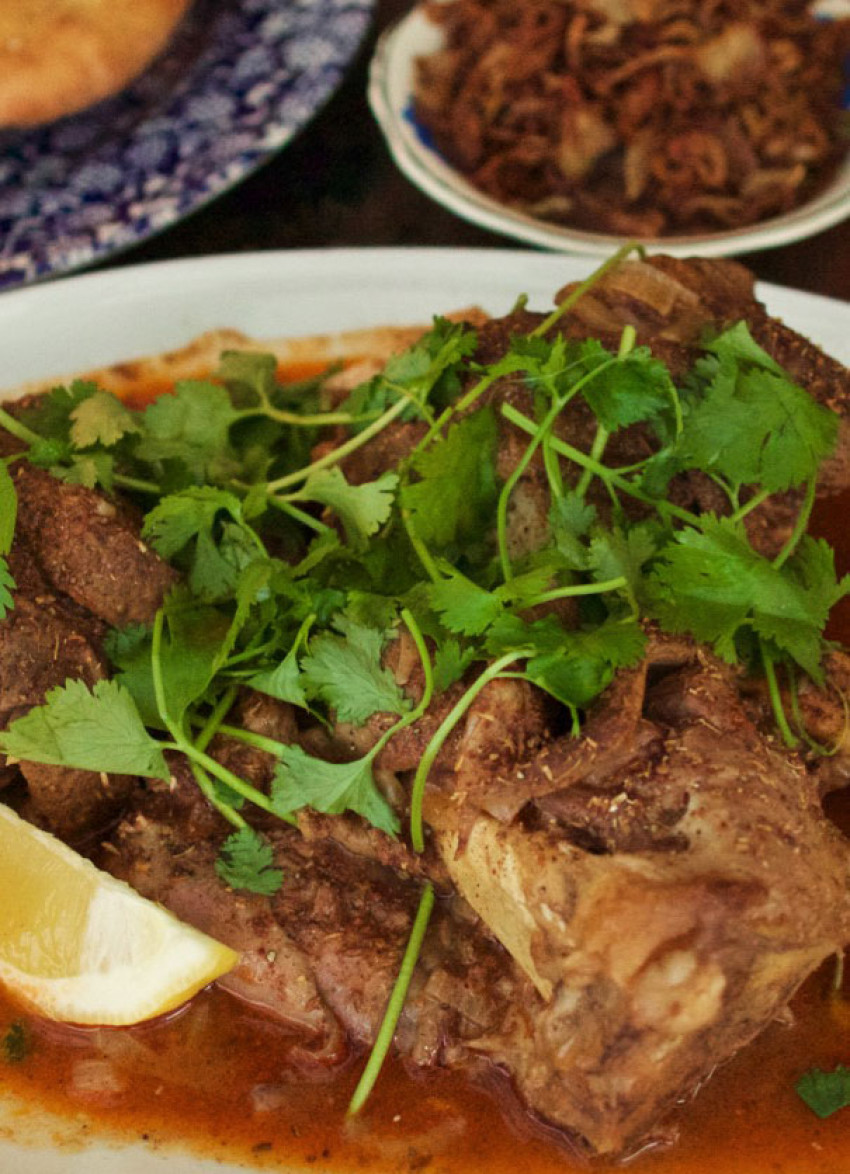
Our practical recipe book reviewer, David Parker, tries a Kunna Gosht from Sumayya Usmani's Pakistani cookbook Summers Under the Tamarind Tree.
I don't really know anything about Pakistani cuisine, or at least I didn't a week or so ago before I read this book. I've tried Googling it but I couldn't really find any purely Pakistani restaurants in Auckland (although there were a few Indian/Pakistani places. If anyone has any good local tips, let me know in the comments). So I guess I'm exactly the intended audience for Sumayya Usmani's Summers Under the Tamarind Tree. Quite a fruity name for a cookbook really, I can't help thinking it would make a good title for a hypothetical sequel to the 2003 romantic comedy starring Diane Lane Under the Tuscan Sun…
Having grown up in Pakistan, Sumayya moved to England and was surprised that despite a fairly large Pakistani community the cuisine hadn't found the same footing as others over there. Inspired by a sense of patriotism and a passion for the food she grew up eating she decided to write this book, a selection of recipes from Pakistan covering everything from street food to home cooking to feasts and celebrations to sweets and desserts.
I could've easily flipped the book to almost any recipe and been happy. But the bright red sauce around the lamb shanks in the photo of the Kunna Gosht stood out to me – something that red has to be good right? And then there was the thought of slow-cooked lamb shanks almost falling off the bone. Turns out Kunna Gosht is traditionally a wedding dish and having just been to a wedding which served a very traditional selection of roast dinner/salads/buffet-type things I wondered what it'd be like to have a lamb shank curry instead.
To get the wide array of spices required I decided to return to the Indian supermarket where a bird pooped on me once. Despite this traumatic experience I love the Indian supermarket. The shelves are stacked high with a stunning array of products and packages you'd never find in a boring regular supermarket. I stood, slightly dazzled by the selection, in the spice aisle as regulars passed me by confidently taking scoops of spice from the bins. I was stuck trying to find aniseed, but realised that maybe I should look for a Hindi name; a quick Google on my phone left me finding a packet of Saunf a few seconds later. I left poop-free with everything I needed. Bless you Indian supermarket!
I started by making the ghee, if I was just making the lamb shank curry I wouldn’t have bothered and would probably have just used a knob of butter as there was so little of it in the recipe. But I decided last minute to make the suggested accompaniment; Sheermal (a semi-sweet saffron and cardamon-enriched bread). However, as I hadn’t planned to make it I hadn’t bought saffron but I decided to just skip the saffron. I melted a vast amount of butter and watched it while the scum slowly rose to the surface, after a few minutes I was left with ghee.
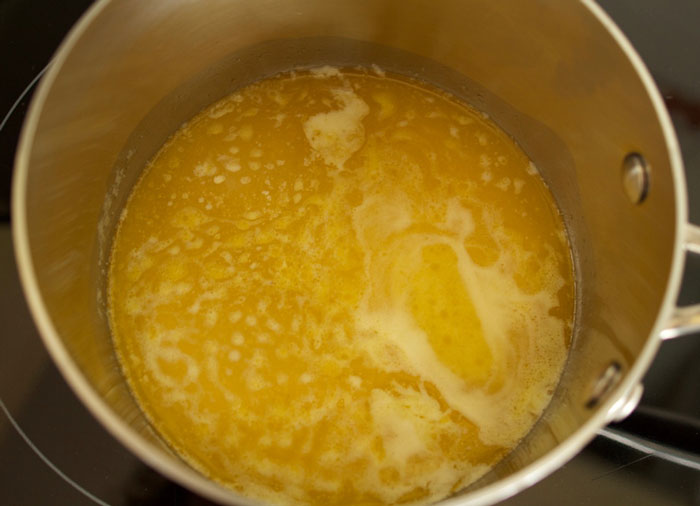
Then I moved on to the fried onions which would be served with the Kunna Gosht as a topping. I wasn’t sure what medium onions meant at the time, and every onion I picked up seemed to be extraordinarily large so I settled on using small brown onions and added a couple more for good luck. I wasn’t really feeling like a good cry so after removing their skins I used the slicing attachment on my food processor to slice them up. Then I threw them into the deep fryer in batches, the first handful I dropped in was maybe a little large and the oil almost bubbled up over the top of the fryer – quite scary! With them all fried I set the onions aside on a paper towel to drain the remaining oil. I know you can buy pre-fried onions in most Asian supermarkets, they even had a huge container full of them in the Indian supermarket but I wanted to make them myself. Whenever I get a laksa or anything that has them as a topping I think about how magical it is that an onion can be transformed into these incredibly sweet and earthy, crispy brown bits just by deep frying.
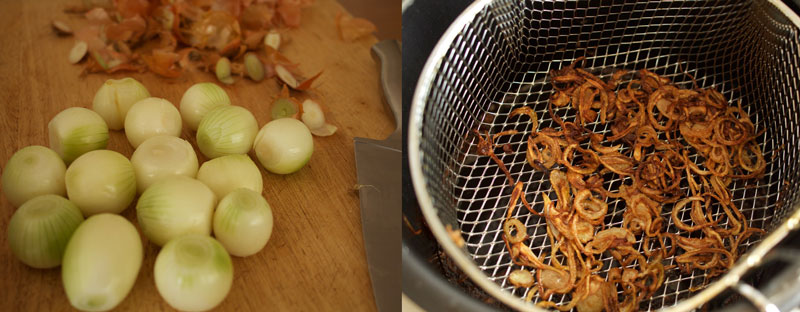
The Sheermal looked so pretty and I wasn't sure if I'd be able to pull them off so I decided to make them before I started preparing the curry, in case I needed to make them again. I started by mixing the ingredients into a dough in a stand mixer – I found the dough to be very wet so added a little more flour just to get it closer to a regular bread consistency. After the dough had risen for an hour I formed it into four rounds. I pierced the tops of the rounds with a fork all over, then brushed them with milk and sprinkled poppy and sesame seeds over the top. After baking I brushed them with a little extra milk.
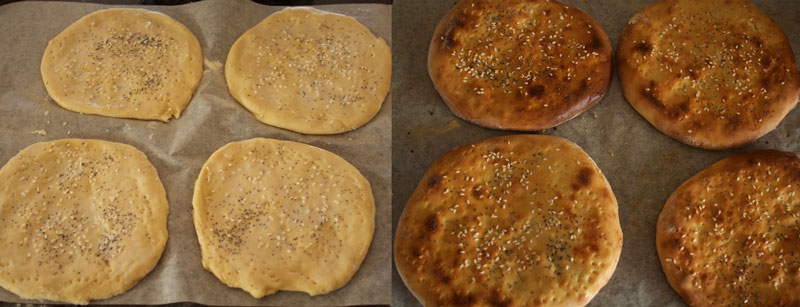
I put them aside wrapped in foil. I probably should’ve baked them while the lamb was cooking as they were much better fresh but I honestly wasn’t sure if they were going to come out okay but I was really happy with the result – they look just like in the book.
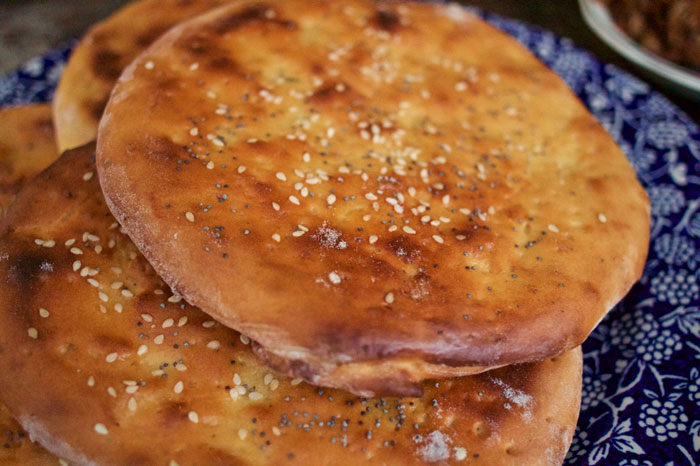
Back to the main event: the lamb. Before I could start cooking I needed to grind together the spices for the garam masala (a blend of spices common in Pakistan and India). I don’t have a spice grinder so it took me quite some time with a pestle and mortar. If I were going to be grinding this amount of spice on a regular basis I think I'd have to invest in one, but a lot of pounding and grinding later I managed to get the spice mix nicely ground.

I bought whole lamb shanks but the recipe was for about 3 or 4 shanks cut into 6–8 pieces. I thought this shouldn't be much of a problem... However, after almost seriously injuring myself with a cleaver I decided to try a hacksaw. After about 10 minutes with the hacksaw barely tickling the bone I considered taking them out to the bandsaw in the garage, but I decided it probably wasn’t very hygienic. Instead I cooked them whole. I could always let them keep boiling for extra time if they weren’t fully tender.
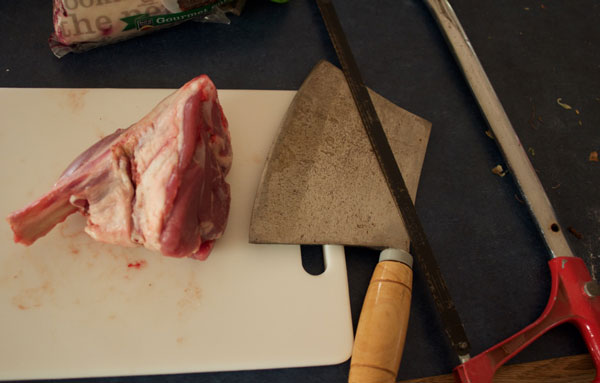
First I fried the onions, garlic and ginger in a little oil and the ghee I had made. When they had softened I added the shanks to the pan and sealed the meat all over.
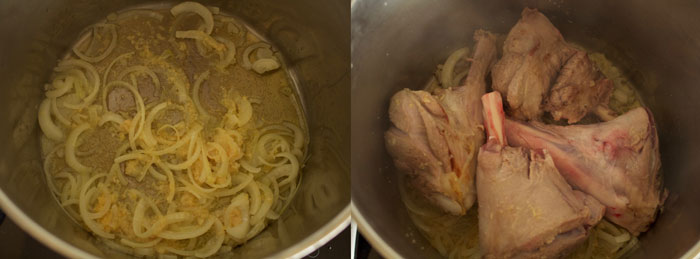
Then I could add the garam masala and Kashmiri chilli powder. Apparently the Kashmiri chilli powder doesn't so much add heat as it does colour – it is incredibly bright red, almost unnaturally so. After the spices had become nice and fragrant I added the water and let it do its thing for an hour.
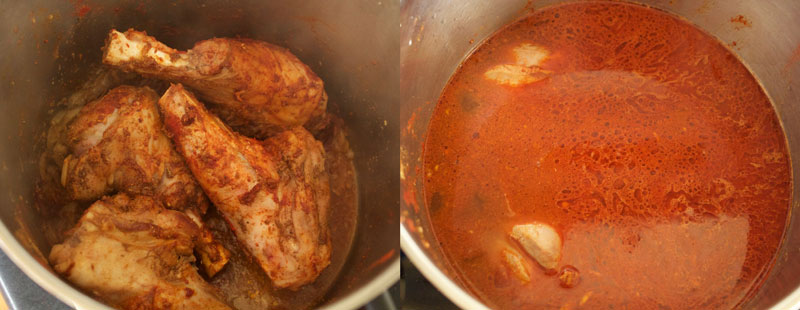
After an hour had passed I removed a cup of liquid and mixed it in with a paste of flour and water. Once I'd combined the paste and the liquid I returned it to the curry. I assume this was to thicken the curry but I didn't really notice it having much effect. Then I turned the heat to low and left it for another couple of hours before serving with fresh coriander, the fried onions, lemon wedges and the Sheermal. Plus a final sprinkling of the leftover garam masala.
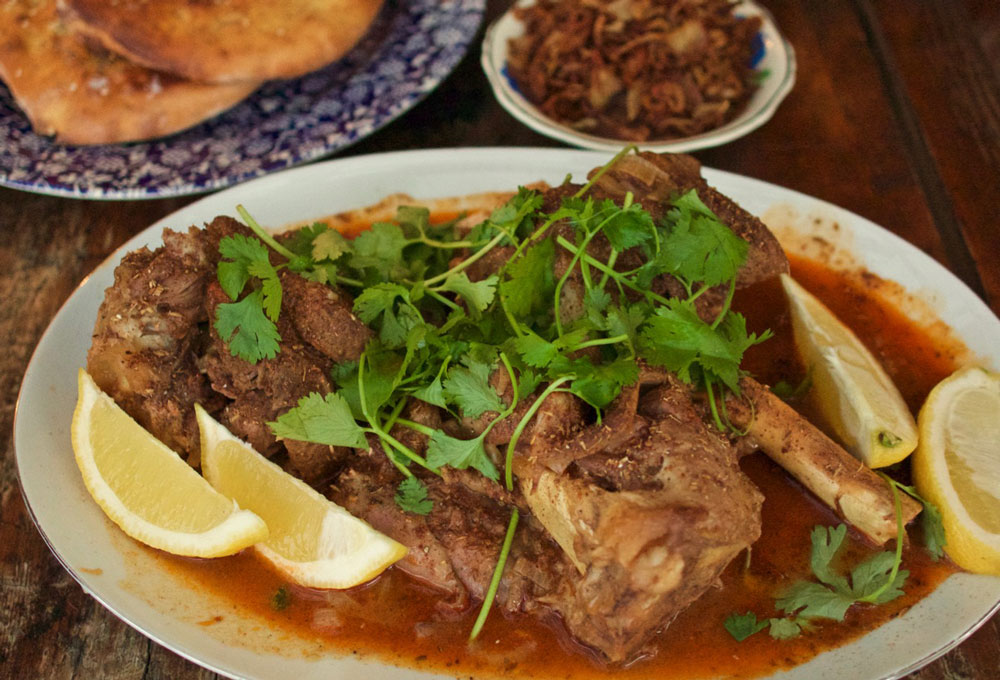
The lamb was very lamb-y – so savoury but also sweet at the same time. The meat was so tender it was falling off the bone as I tried to place the shanks on a dish. I think it was good having the sauce light and thin as the meat was so rich; the coriander, lemon and fresh sprinkling of the spices helped brighten the flavour palate and make it fresh and exciting while the curry had all of the mellow and earthy undertones from slowly cooking the lamb shanks. I thought the spice level was perfectly medium too.
The Sheermal were delicately sweet with just a hint of cardamom (remind me to experiment with cardamom-flavoured bread more). As I mentioned before, they were lots softer when they first came out of the oven but seemed to have dried out a bit after sitting in foil for a while. I wasn't sure if they'd be filling enough but I certainly hadn't needed to make rice, I was stuffed. If this was served up at a wedding I'd be very happy.

latest issue:
Issue #120
As the days become shorter, and the nights cooler, the latest issue is perfectly timed to deliver delicious autumn dishes. From recipes using fresh seasonal produce such as feijoas and apples, to spectacular soothing soups and super-quick after-work meals in our Food Fast section, we’ve got you covered. With Easter on the horizon, we feature recipes that will see you through breakfast, lunch and dinner over a leisurely weekend holiday, and whip up chocolatey baking treats sure to please. We round up delicious dinners for two and showcase a hot new Korean cookbook before heading south to Dunedin to check out all that’s new in food and dining.The latest issue of dish is on sale NOW at all good bookstores and supermarkets – don’t miss it!


